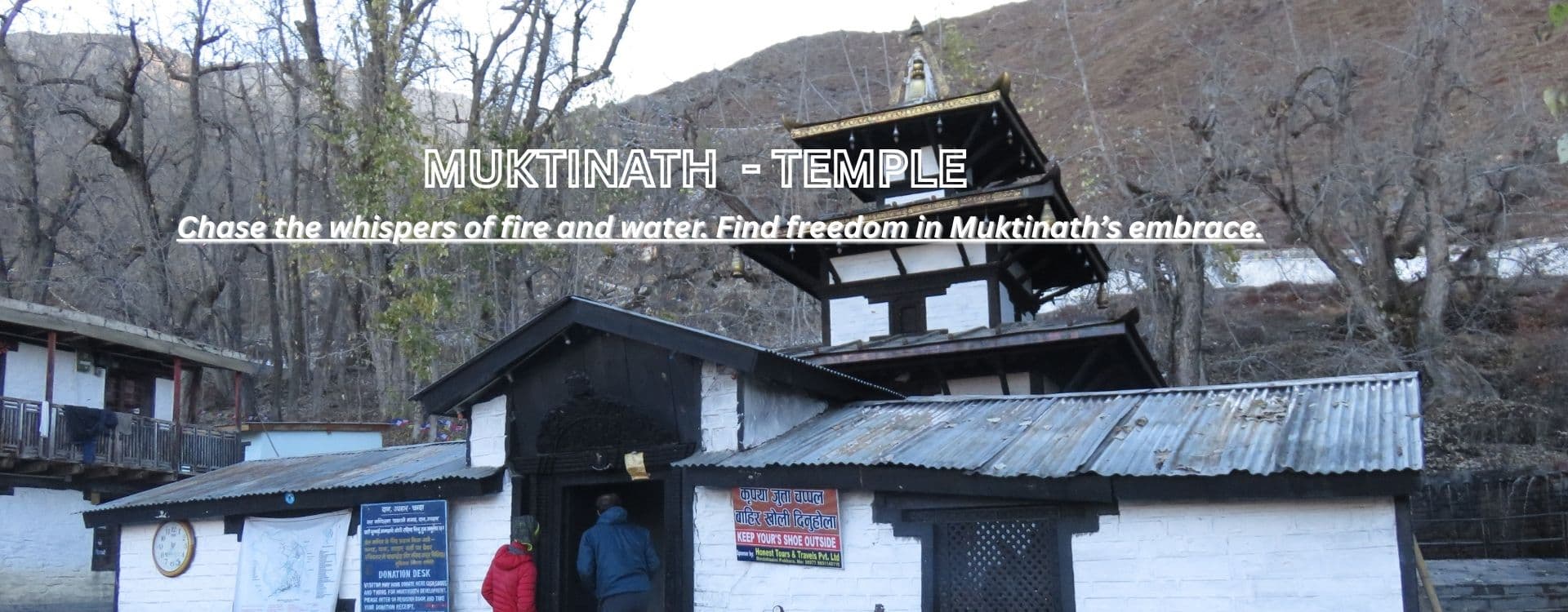- What is the Meaning of the Word Muktinath (Mukthinath)?
- The Architecture and History of Muktinath Temple
- Specialities About Muktinath Temple
- Why do People Visit Muktinath Temple?
- Location of Muktinath Temple in Nepal
- Permits are Required to Visit the Muktinath Temple
- Festivals and Pilgrimage Seasons
- Local Culture and Communities
- Surge in Pilgrims at Muktinath Temple in 2025
- Conclusion
Have you ever dreamed of visiting a place so high up in the mountains that clouds float below you? Imagine standing at 3,800 meters in the Himalayas, with snow-covered peaks all around, watching water pour from 108 stone spouts that people believe can wash away all your sins. This is Muktinath, a temple that sits on the edge of the world, where both Hindus and Buddhists have been coming for hundreds of years.
Hidden in Nepal's remote Mustang valley, Muktinath Temple is something special. For Hindus, it's one of the most important shrines dedicated to Lord Vishnu. Buddhists treat it with equal respect because Guru Rinpoche, the monk who brought Buddhism to Tibet, once meditated at this very spot. Behind the temple, natural gas burns day and night, right next to the flowing spring water.
Fire and water, existing side by side, it sounds impossible, but you can see it with your own eyes. People show up here for all kinds of reasons. Some want blessings, some are after adventure, and plenty just want to see what all the fuss is about.
What is the Meaning of the Word Muktinath (Mukthinath)?
Muktinath, the name itself tells you why people care so much about this place. It's Sanskrit, that ancient language that's been around forever (like 3,000+ years) and is basically the grandparent of Indian and Nepali words today. Muktinath splits into two parts: "Mukti" and "Nath."
“Mukti" is liberation. Freedom from samsara, that endless loop of being born, dying, getting reborn. Hindus and Buddhists see it as this wheel you can't get off. Life after life, same drama, same pain. "Nath" means lord, master, or protector, someone or something with divine power. If you put them together, Muktinath means "The Lord of Liberation" or "The Place Where You Find Freedom."
The Architecture and History of Muktinath Temple

Muktinath Temple is situated at an elevation of about 3,800 meters (12,342 feet) above sea level in Nepal's Mustang District. It's the upper reaches of the Kali Gandaki valley, right at the foot of the Thorong La pass. The history of this place runs deep, woven into both Hindu and Buddhist traditions for over a thousand years.
For Hindus, Muktinath is one of the 108 Divya Desams, the most sacred shrines dedicated to Vishnu worship. It also holds the rare status of being a Svayam Vyakta Kshetra, a place where the deity manifested on its own without human installation. Buddhist history ties the site to Guru Rinpoche (Padmasambhava), the legendary 8th-century master who brought Buddhism to Tibet. He's said to have meditated here during his travels through the Himalayas. Buddhists call it Chumig Gyatsa, meaning "Hundred Waters," and count it as one of 24 major tantric pilgrimage sites.
Muktinath Temple follows the traditional Nepali pagoda style. The main shrine has beautifully carved wooden details that have survived harsh mountain weather for generations. Inside this central temple sits a golden statue of Vishnu. What's interesting is that Buddhists who visit see this same statue as Avalokiteśvara, their compassionate deity.
Now here's the part everyone remembers: the 108 water spouts called Mukti Dhara. They form a semicircle right behind the main temple, and pilgrims walk through, letting the freezing water hit them from each spout.
Right next to the spouts, you'll find two sacred ponds known as Mukti Kunda. Devotees dip into these before or after their shower under the spouts, and before entering the inner temple. A short walk away sits another shrine that locals call Jwala Mai Temple, and this one's a geological wonder.
Natural gas seeps up through cracks in the rock and feeds flames that burn all day and night. Nobody lights them, nobody puts them out. Right next to these eternal flames, cold spring water flows. Fire and water, living side by side. You've got earth (the rock), fire (the flames), water (the spring), and air (the wind that never stops blowing at this altitude). All five elements in one spot.
Specialities About Muktinath Temple
Here are five specialties about Muktinath Temple that you won’t readily find at other sacred sites:
Ancient Sea Fossils in the Mountains
Even when you're standing nearly 3,800 meters up in the Himalayas, surrounded by some of the world's highest peaks, you can find fossils of sea creatures. The Kali Gandaki River, which flows near Muktinath, carries these dark, spiral-shaped stones called Shaligrams. They're actually ammonites, ancient marine animals that lived millions of years ago when this entire region sat at the bottom of the Tethys Sea.
Over millions of years ago, India crashed into Asia, and that collision pushed the seafloor thousands of meters into the sky. Those ancient sea fossils came along for the ride. Hindus don't look at these shaligrams; rather, they believe these stones are self-manifested forms of Lord Vishnu.
A 200-million-year-old piece of natural history becomes a living part of someone's spiritual practice. You won't find many places where science and faith sit together so comfortably in the palm of your hand.
Two Religions, One Temple
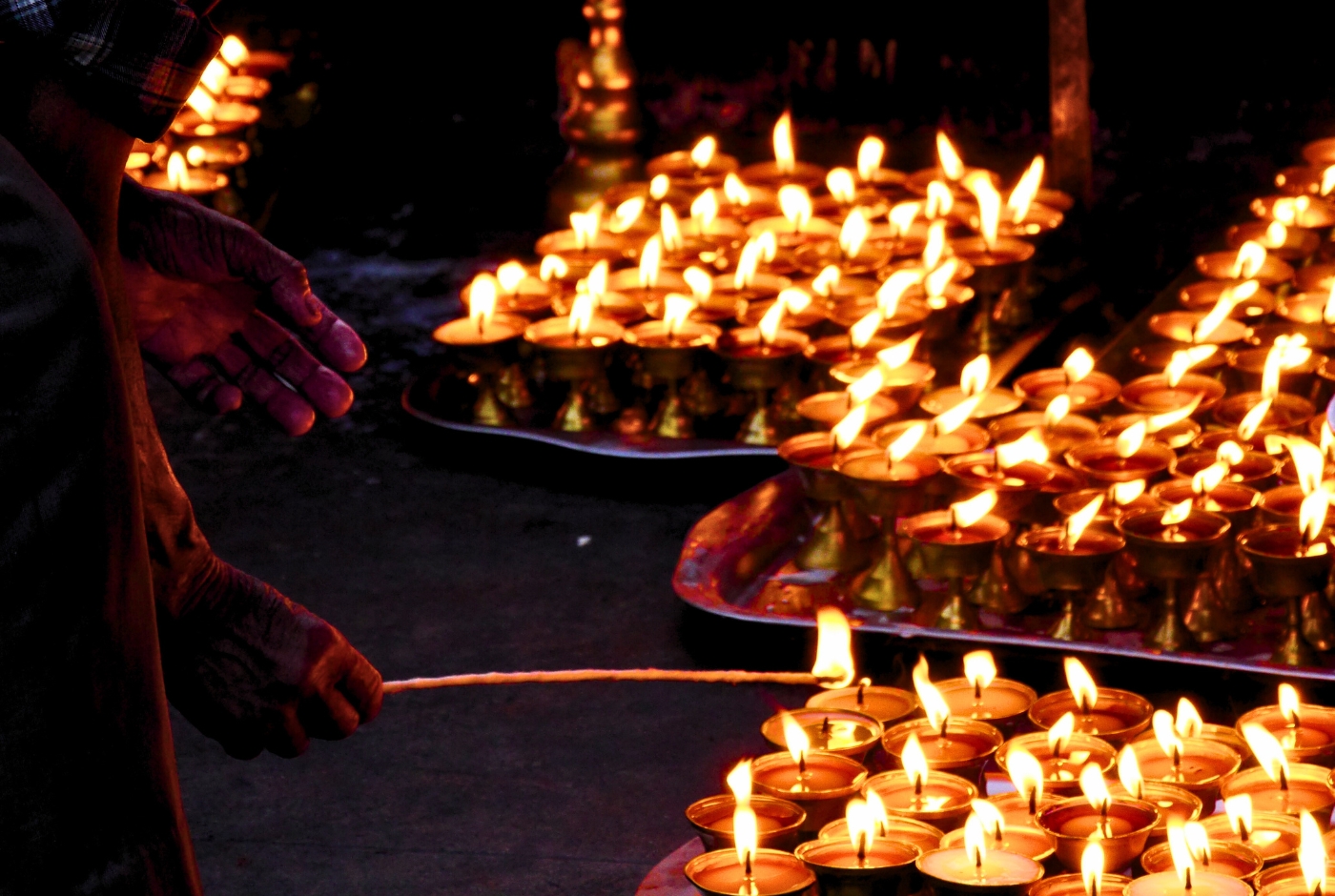
Walk through Muktinath and you'll notice something rare. Hindu priests in traditional dress perform Vedic rituals, accompanied by Sanskrit chants and fire offerings. Just steps away, Buddhist monks spin prayer wheels and light butter lamps.
For Hindus, Muktinath ranks among the eight Svayam Vyakta Kshetras, sacred sites where Vishnu is believed to have manifested on his own. It's also counted among the 108 Divya Desams, the most revered Vishnu temples scattered across India and Nepal. Buddhists know the place as Chumig Gyatsa, meaning "Hundred Waters," and they honor it as a meditation site blessed by Guru Rinpoche. He's the legendary teacher who brought Buddhism to Tibet back in the 8th century.
Both groups use the same temple complex, climb the same stone steps, and bathe under the same 108 water spouts. There's no competition for space or legitimacy, just a quiet recognition that something powerful lives in this valley.
The Journey Itself Transforms You
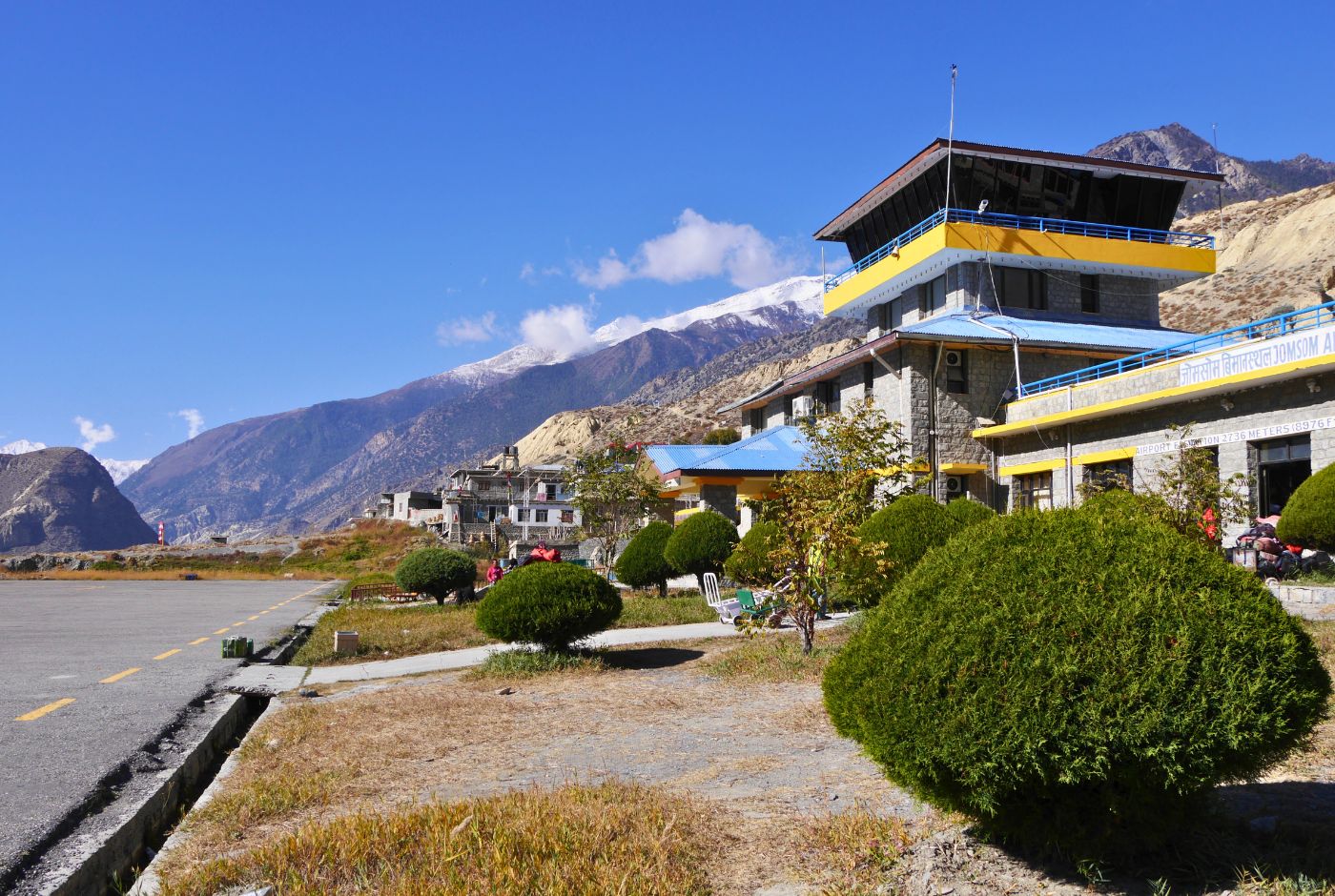
Muktinath sits at roughly 3,700 to 3,800 meters above sea level in Mustang District, one of Nepal's most isolated corners. Getting there isn't a casual day trip. You can fly to Jomsom and then trek for several hours on mountain trails, or you can take the jeep ride. Some pilgrims come through the Annapurna Circuit, a multi-day trek that tests every muscle and mental reserve you have.
At nearly 3,800 meters, the air holds about 40% less oxygen than at sea level. Your breathing gets labored, your heart works harder, and headaches are common. In both Hindu and Buddhist philosophy, spiritual progress requires effort and discomfort. You can't expect transformation to come easily. Getting to Muktinath isn't easy, and that's kind of the point. The physical struggle mirrors what's happening inside, dealing with your ego, letting go of attachments, and breaking patterns you've been stuck in for years.
When you finally spot the temple, you've earned more than a view as something inside you has shifted. The pilgrimage isn't about arriving at a destination; it's about who you become on the way there.
A Place Where God Appeared Without Human Help
Hindus have this concept called Svayam Vyakta Kshetras, basically places where a deity just showed up on its own. Nobody carved a statue, nor did any priest perform a special ceremony. The god decided to be there, and that was that.
Muktinath holds this rare status, and for devotees, that distinction matters profoundly. It's not like visiting some temple people built and then asked God to bless. This is where God decided to show up. The place is holy because of that choice, not because humans made it holy.
This belief adds weight to every step of the pilgrimage. When you enter the temple grounds, you're not just in a building that symbolizes Vishnu. You're at an actual point of contact between the physical world and the divine.
Nature is Part of the Sacred Experience
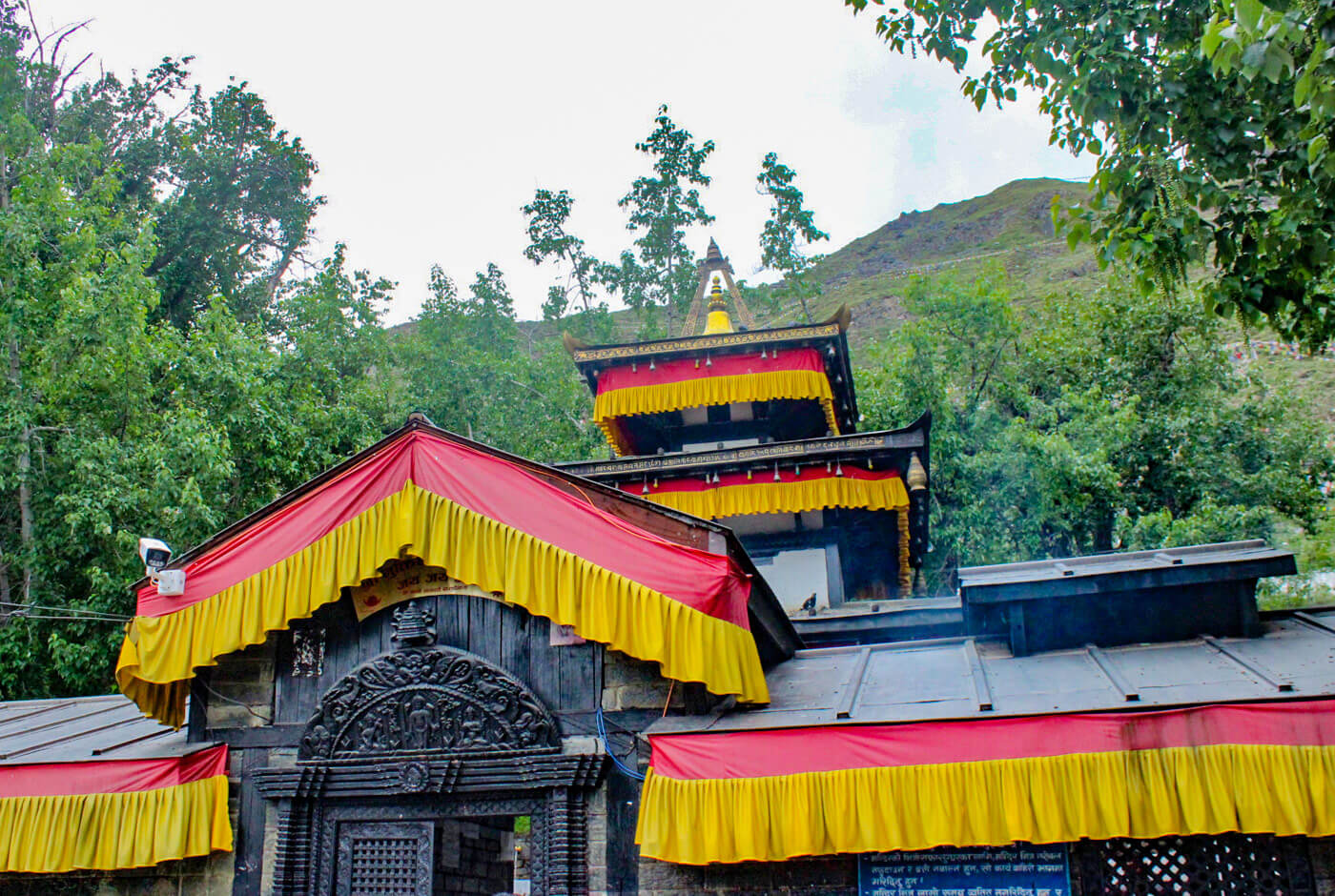
Most temples try to control their environment. They build walls to keep the weather out, create sheltered courtyards, and establish clear boundaries between sacred space and wild nature. Muktinath takes the opposite approach. Here, the natural world isn't a backdrop; it's woven directly into the rituals and the architecture of worship.
Those 108 water spouts are fed by glacial streams channeled down from the peaks. The water that pours over pilgrims is shockingly cold, straight from snowmelt and underground springs. You're not symbolically washing away karma with room-temperature tap water.
Then there's the eternal flame at Jwala Mai Temple, burning continuously because natural gas seeps up through fissures in the bedrock. Nobody lights it in the morning or tends it through the night. It's been burning for centuries, fed by geological processes happening deep underground. Fire and water exist side by side here, and nobody finds that contradictory.
Why do People Visit Muktinath Temple?
People don't travel to Muktinath just for a mountain vacation or some nice photos. They come for something deeper, something that tugs at the soul. The temple sits high in Nepal's Mustang district and goes by another name: Mukti Kshetra, which literally means "the place of liberation." According to tradition, coming here moves you closer to freedom from the endless cycle of birth, death, and rebirth.
Vaishnavas' Belief About Muktinath Temple?
For Vaishnavas (devotees of Bishnu), Muktinath holds a top-tier position in their spiritual geography. It's counted among the 108 Divya Desams, the most sacred abodes of Vishnu, and is the only one outside India.
Vaishnavas believe Muktinath is a Svayam Vyakta Kshetra, one of those rare places where the deity manifested without any human help. At the statue installation ceremony, there was no formal ritual to invite the god Vishnu; he just appeared here on his own, which gives the shrine a level of authenticity that few other temples can claim.
When Vaishnava pilgrims visit, they have specific goals. They bathe under the 108 bull-headed water spouts as a purification ritual, worship the golden Vishnu image inside the main temple, and pray for moksha.
Shaivas Cultural Belief About Muktinath Temple
Muktinath isn't just a Vishnu temple; followers of Shiva and the goddess Shakti also consider it sacred. The site is recognized as a Shakti Peetha, a holy site associated with the mythology of goddess Sati.
The story goes that Sati's body was cut into pieces, and those pieces fell across the Indian subcontinent and beyond, with each landing spot becoming a Shakti Peetha. At Muktinath, tradition says Sati's cheek fell here, making it holy ground for Shaiva and Shakta devotees.
The complex has a smaller shrine, "Mukteshwar Mahadev," that draws Shiva followers. They come for blessings, to pay respects to Shakti, and because they believe the divine feminine energy is strong here.
Buddhists' Belief in Visiting Muktinath
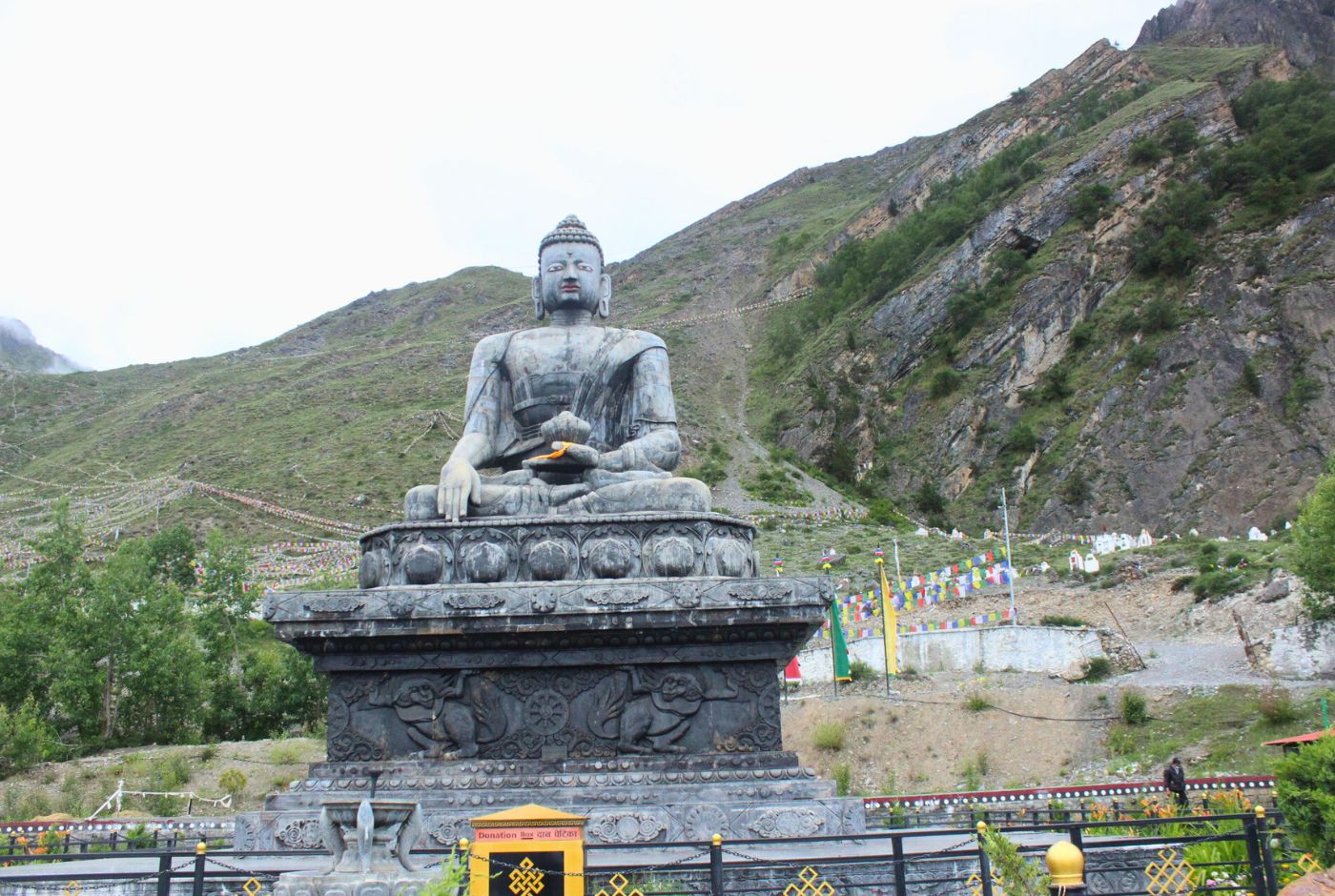
Buddhists, especially those from Tibetan Vajrayana and Himalayan traditions, know Muktinath by a different name: Chumig Gyatsa, which translates to "Hundred Waters." For them, it's one of 24 significant tantric pilgrimage places, blessed by Padmasambhava (Guru Rinpoche) when he traveled to Tibet centuries ago.
Buddhist pilgrims approach Muktinath differently from Hindu visitors, though they're often doing rituals side by side. They see the 108 water spouts as symbolic, each stream of cold water washing away mental and spiritual defilements.
For Buddhist practitioners, Muktinath becomes a terrain for deep meditation, tantric practice, and what they call compassionate awakening. It's not just a pathway toward personal liberation but a power spot where the conditions are right for spiritual breakthroughs.
Swaminarayan Sampradaya Belief for Muktinath Temple
The Swaminarayan Sampradaya has its own special connection to Muktinath. Their founder, Swaminarayan, visited this shrine back in the 18th century and performed intense ascetic practices here, pushing his body and mind to spiritual development.
For followers of this faith, visiting Muktinath means walking in their guru's footsteps. When they stand where he stood, bathe where he bathed, and pray where he prayed, they're not just seeking general purification or liberation but affirming their lineage.
Location of Muktinath Temple in Nepal
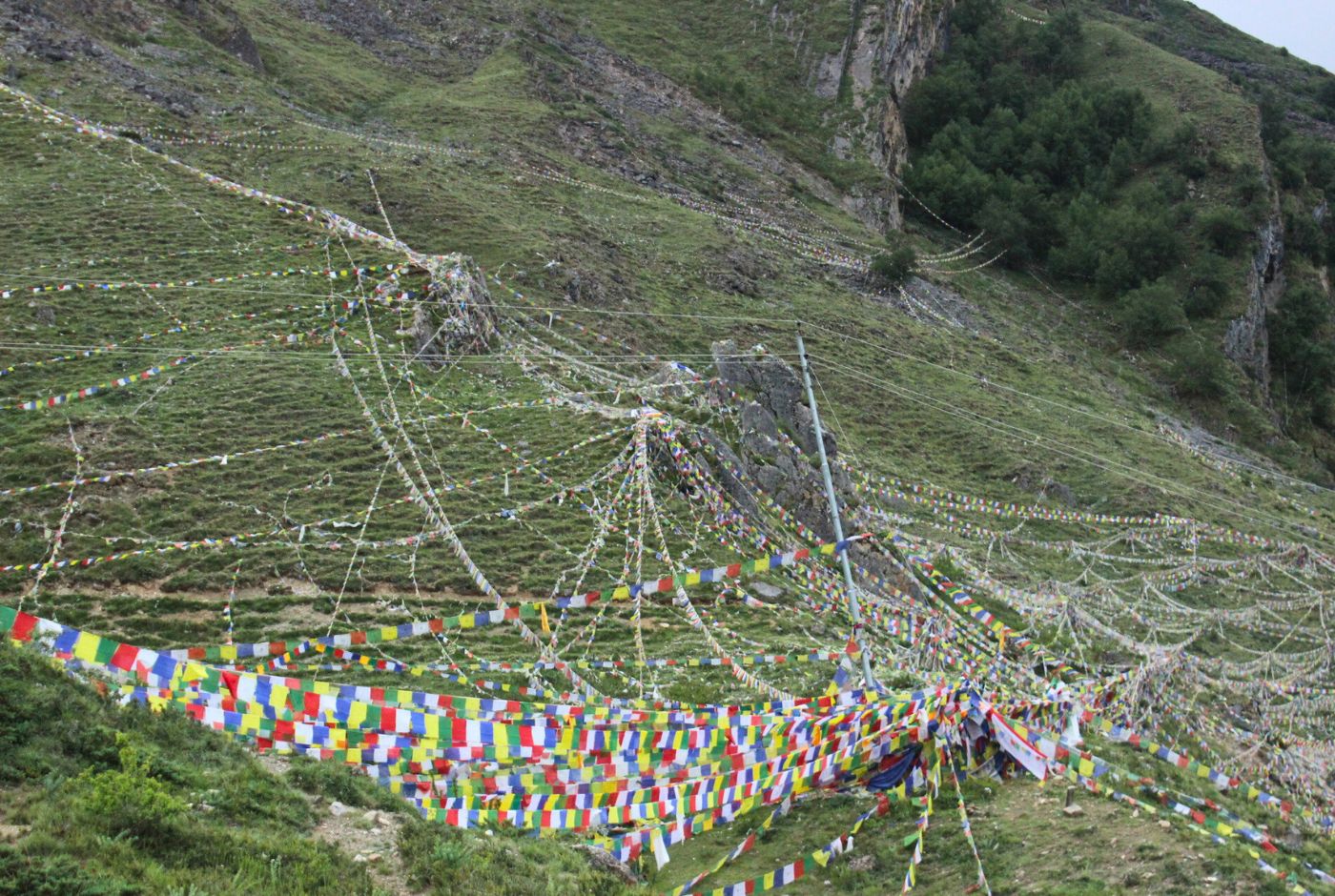
Muktinath Temple is located in the Mustang District of Gandaki Province, one of Nepal’s most remote corners. More specifically, it's in a rural municipality called Baragung Muktichhetra. The temple is at about 3,800 meters above sea level and sits in the upper Kali Gandaki valley, right below Thorong La Pass.
The landscape around Muktinath is something else entirely: snow-capped peaks, ridges carved by wind for millions of years, and the gorge of the Kali Gandaki River. Most visitors fly from Pokhara to Jomsom first; it's a short flight but one of the most scenic you'll ever take. From Jomsom, you've got options: take a jeep ride or trek it on foot like pilgrims have done for centuries.
There's also an alternate route if you're coming by road through Beni, Tatopani, Ghasa, and Marpha. That journey takes two to three days, depending on road conditions and how many stops you make.
Riding a motorcycle up to Muktinath Temple has become one of Nepal's most thrilling adventures. The route from Pokhara climbs through Jomsom and Kagbeni, taking you up to about 3,800 meters on the road. For this kind of ride, you need a bike built for Himalayan conditions. Experienced riders recommend the Royal Enfield Himalayan (411cc or 450cc) and the Classic 350cc for their durability. Additionally, lighter dirt bikes like the Honda CRF or XR series work well on the rougher sections.
Permits are Required to Visit the Muktinath Temple
If you're planning to visit Muktinath, you'll need to sort out permits before you go. The temple is in the Annapurna Conservation Area, which is one of Nepal's protected high-altitude zones. The permit you absolutely need is the Annapurna Conservation Area Project permit, usually called the ACAP permit. This one's required for everyone entering the conservation area, whether you're flying to Jomsom, driving by jeep, or trekking. The permit helps fund conservation efforts in the region and supports local communities.
Once you've got the ACAP permit, keep it handy. You'll hit checkpoints at Jomsom, Kagbeni, and other places along the way where officials check everyone's documents. They take this seriously, and showing up without proper permits can lead to fines, delays, or even being turned back.
Festivals and Pilgrimage Seasons
Are you planning your trip to Muktinath? The time you choose makes a big difference. Let us walk you through the best seasons and special festival times.
The Best Months to Go
Spring and autumn are when most pilgrims visit. From March to May, spring brings warmer days and blooming flowers along the trails. The winter snow melts, opening the paths. From September to November is autumn, and many travelers say this is the perfect time. The air feels fresh, the skies stay clear, and you get amazing mountain views.
What About Other Seasons?
Summer means monsoon rains from June to August. Heavy rainfall can trigger landslides, and flights are more often cancelled. Getting there becomes tricky during these months. Winter runs from December to February. It gets really cold, and snow covers everything. Some people still make the journey, but it's much harder. The temple stays open, but reaching it takes extra effort.
Festival Times Worth Knowing
Specific festivals bring special energy to Muktinath. For Hindu pilgrims, Janai Purnima is a big deal, which falls on the full moon in August. People come to bathe at the 108 water spouts and change their sacred threads. Then there's the Yartung Festival around August or September. The local Mustang communities celebrate with horse races and cultural shows.
Buddhist visitors often come during Losar, the Tibetan New Year in February or March. Buddha Jayanti in May is another important time when monks and devotees gather at nearby monasteries.
Local Culture and Communities
The villages around Muktinath are home to the Lopa, Thakali, and Gurung communities, people who blend Tibetan and Nepali ways of life. Houses are made from mud and stone, hardened by the sun. Religion here blends Tibetan Buddhism, Bon practices, and Hindu beliefs, all living peacefully together. Families make their living through farming, raising yaks, and welcoming tourists. The hospitality is authentic, visit a home and you'll get butter tea, barley dishes, maybe some apple brandy.
Festivals are what keep the culture breathing. The Tiji Festival in Lo Manthang features masked dances that tell stories of good defeating evil. The Yartung Festival celebrates the end of summer with horse races, music, and feasts. These aren't just parties; they teach young people their history and keep old traditions alive. Tourism has brought changes and modern influences, but the people work hard to protect what matters. They balance progress with deep respect for their spiritual roots and sacred land.
Surge in Pilgrims at Muktinath Temple in 2025
Late October 2025 brought something remarkable to Muktinath. On October 25 alone, a record 6,859 visitors entered the Mustang district, with 6,506 domestic tourists and 353 international visitors.
During the ten days from October 17 to 26, the numbers get even more impressive. More than 40,000 travelers passed through the Beni-Jomsom route. What's driving this surge? First, the timing fell right after Tihar, one of Nepal's biggest festivals, when many people take vacation time. Second, the highway access to Mustang has improved significantly in recent years, making the journey less punishing than it used to be. What once required days of hard trekking can now be done by road, opening Muktinath to people who wouldn't have attempted the trip before.
This boom in visitors has brought real economic benefits to the region. Hotels and lodges between Ghansa and Muktinath reported full bookings throughout the period. Transport services such as jeeps, buses, and even ponies were running constantly to meet demand. For communities that depend heavily on pilgrimage tourism, this kind of traffic means a good season.
Conclusion
Muktinath is more than a temple; it's where heaven feels close to earth. In Nepal's Mustang region, this place brings together spirituality, nature, and human strength. The Himalayan winds, the sacred Kali Gandaki waters, the thin mountain air, everything here speaks to you as liberation isn't just a religious word at Muktinath. What makes it truly special is how it showcases Nepal's incredible mix of cultures and how faith lives alongside nature.
We at Nepal Hiking Team know how to make your visit to the Muktinath temple a reliable one. We've got guides who understand the land and the culture. Our itineraries balance comfort with real cultural experiences. We don't just take you to Muktinath, we help you feel what it means. Whether it's faith, curiosity, or the challenge of high-altitude trekking that brings you here, we make sure you're safe and the experience runs deep.
Our approach is simple: Muktinath should be more than another stop on a map. It should be a real pilgrimage that touches something inside you. That's how we believe this sacred place deserves to be seen, up close, with meaning, exactly as it was meant to be felt.
FAQs
What makes Muktinath Temple so special for pilgrims?
Muktinath is seen as a place where you can find spiritual freedom. Hindus call it Mukti Kshetra, which means "place of liberation." Buddhists know it as Chumig Gyatsa or "Hundred Waters." For Hindus, it's one of 108 sacred Vishnu temples and a shrine that appeared on its own without human hands building it. Buddhists connect it to Guru Rinpoche and visit it as part of their tantric pilgrimage path. The temple brings together water, fire, and mountains in one spot. It's not just about prayer, it's about feeling something deep while surrounded by nature.
How do I get to Muktinath Temple?
Getting to the Muktinath temple is an adventure in itself. Most people fly from Kathmandu to Pokhara, then catch a smaller plane to Jomsom. From Jomsom, you can take a jeep or trek to the temple. There's also a long road route through places like Beni, Tatopani, Ghasa, and Marpha if you prefer driving.
What rituals happen at Muktinath?
The central ritual is bathing under the 108 cold water spouts behind the temple. These spouts are called Mukti Dhara, and people believe the water washes away sins and renews their spirit. Many pilgrims also dip into two sacred ponds, Mukti Kunda, or the Laxmi and Saraswati Kunda, for extra purification. Then there's the Jwala Mai shrine nearby, where an eternal flame burns from natural gas underground.
Should I worry about altitude sickness?
Yes! At nearly 3,800 meters, the air is thin. Altitude sickness can affect anyone and cause headaches, dizziness, shortness of breath, and exhaustion. To avoid altitude sickness, spend a day acclimatizing at places like Jomsom or Kagbeni before going higher. Drink lots of water, climb slowly, and don't push yourself too hard when you arrive. In addition, you should bring warm clothes, plan rest days, and listen to your body.
Are there special festivals at Muktinath?
Yes. Janai Purnima is a significant Hindu festival in the month of Shrawan. Devotees bathe under the 108 spouts and renew their sacred threads. For Buddhists, Losar (Tibetan New Year, around February or March) and Buddha Jayanti bring monks and ceremonies to the area. Visiting during festivals gives you an extra boost of spiritual energy and cultural experiences. However, please be aware that it gets crowded and prices go up during these times.
Do I need permits to visit?
Yes, you do. Muktinath is inside the Annapurna Conservation Area, so you need an ACAP permit. If you show up without them, you might face fines or get turned away. The permit fees help protect the area and support local communities, so it's worth it.
